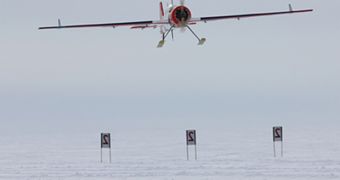Robotic drones, or unmanned aerial vehicles, are slowly becoming efficient and indispensable scientific tools, especially for scientists working in hostile environments. This was made abundantly clear during a recent study conducted in Antarctica, where researchers used a small drone to conduct radar studies of the ice packs covering the South Pole.
The true potential of drones in science has yet to be realized, particularly in the United States, where the Federal Aviation Administration (FAA) has not yet released guidelines and regulations to open the skies for UAV use. Once this happens, we can expect to see a massive surge in drone numbers.
In the meantime, researchers are using these UAV wherever they can, and Antarctica is no exception. For the recent radar soundings of polar ice, scientists with the Center for the Remote Sensing of Ice Sheets at the University of Kansas used a drone of their own design.
The aircraft is modeled on the Yakolev Aircraft Corporation's Yak 54 aircraft, a popular plane from Russia. The UAV the team uses is a 1/3 scale model of the larger airplane, and represents the continuation of an older project the team conducted with standard RC plane models.
This particular model weighs around 37 kilograms (81 pounds), including 2 kilograms (4.5 pounds) of radar gear. Despite significant modifications, its shape is still reminiscent of the Yak's, the team says. The main instrument on the GX1 UAV is a 100-watt ice-penetrating, synthetic-aperture radar.
The team is currently conducting its studies at the sub-glacial Lake Whillans field camp, which is positioned on the Whillans Ice Stream. Their research is the first-ever to use drones for radar soundings in Antarctica, but will most likely not be the last, IEEE Spectrum reports.
The GX1 UAV is capable of achieving a range of around 200 kilometers (124 miles) on just a few liters of fuel, meaning that scientists can get a wealth of data before they have to refuel the drone.
According to the research team, an entire fleet of even smaller drone is currently in the works. These aircraft will feature miniaturized radar instruments, and will conduct studies by flying in formation over designated areas. Any lapse in individual instrument resolution will be compensated by sheer numbers.

 14 DAY TRIAL //
14 DAY TRIAL //